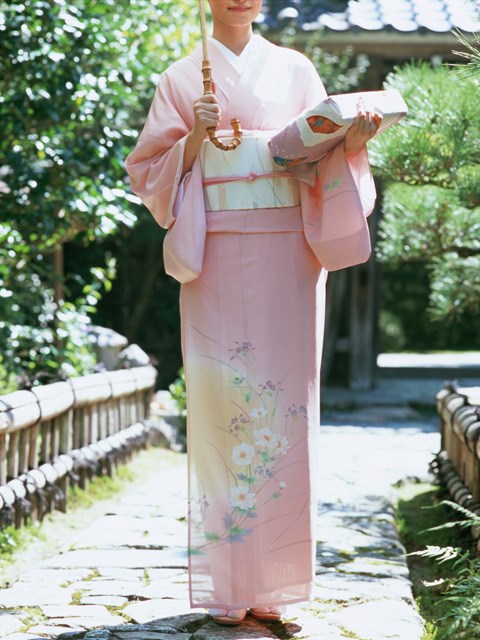着物
日本の伝統的衣類といえば、「着物」です。

「着物」は、「和服」や「呉服」とも同義語です。
元々「着物」は「着る物」を指す言葉で、衣類全体に使われる言葉でした。
明治維新以降の日本に洋服が輸入され始めると、西洋の衣類と区別する意味で「和服」「着物」という言葉が使われるようになりました。
16世紀には、既に西洋世界に日本の衣類は「Kimono」として知られていた経緯があり、「着物」は日本の伝統的衣類、という位置づけになりました。
「着物」は、奈良時代に中国・唐代の衣服に影響を受けた衣類が起源といわれています。
1000年代に入るまで、着物は礼儀を重んじ、ルールに則って着るものでしたが、鎌倉・室町・江戸時代を経て、その着方は徐々に簡素化されていきました。
大正時代に流行った「袴姿」は、簡素化された着物スタイルの典型だと思われます。
20世紀に入ると、日本では、
- 作る工程での布量の削減(コスト削減)
- 着脱の簡単さ
- 動きやすさ
といったことを理由に、洋服文化があっという間に浸透しました。
その一方で、西洋では、前合わせのエレガントな「Kimono Style」は、東洋世界の神秘的で美しい衣類として注目されてきました。
現在「Kimono」は世界的に知られる日本語であると同時に、「Kimono Jacket」(着物風のジャケット)などに発展していき、各国でオリジナルの着こなしで親しまれています。
スポンサードリンク
Kimono
Japanese traditional clothes are kimono.
Kimono is a synonym of wafuku and gofuku.
Originally, kimono is a word that refers to things to wear and it was used for the entire clothes.
When Western clothes were introduced to Japan after the Meiji Restoration, the words of wafuku and kimono have been used to distinguish with Western clothes.
Kimono has been already known as Japanese clothing in the Western world since the 16th century, and it has been regarded as the traditional Japanese clothing.
Kimono is originally derived from clothing that was affected by the clothes of the Tang Dynasty of China in the Nara Period.
People wore kimono in accordance with rules as the courtesy until the 1000's and it became gradually simplified after the Kamakura, Muromachi, and Edo period.
Hakamasugata which was popular in the Taisho period is typical of simplified kimono style.
Western clothes culture was quickly spread in the 20th century in Japan as western clothes can reduce the cost of fabric in the process of making and it is easy to undress and move with.
On the other hand, in the West, the elegant style of kimono folding the gown in front has attracted people as a mysterious and beautiful clothing of the Orient.
While kimono is known worldwide, it has developed into kimono jacket and has been popular with the unique ways of dressing in each country.
Sponsored Link